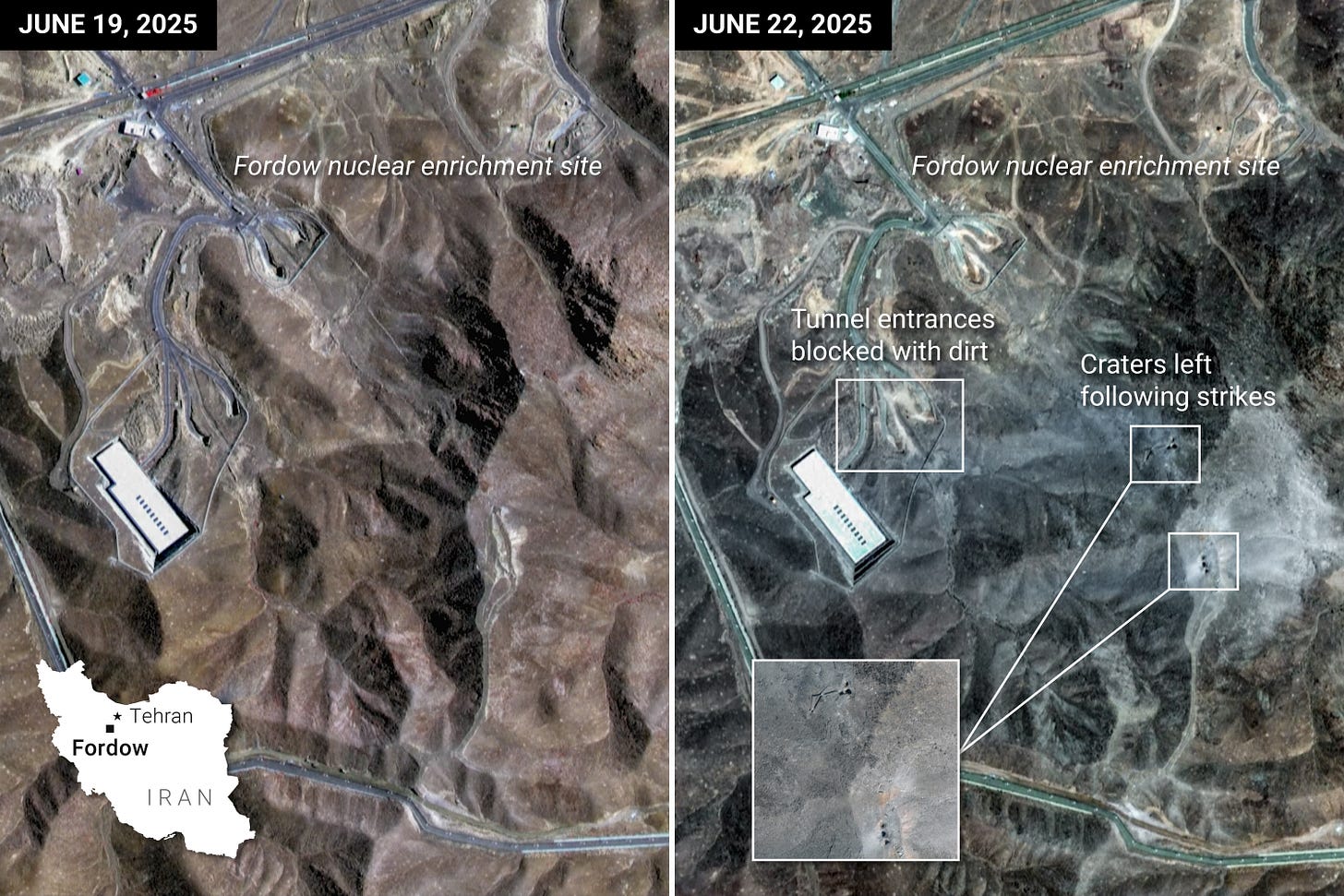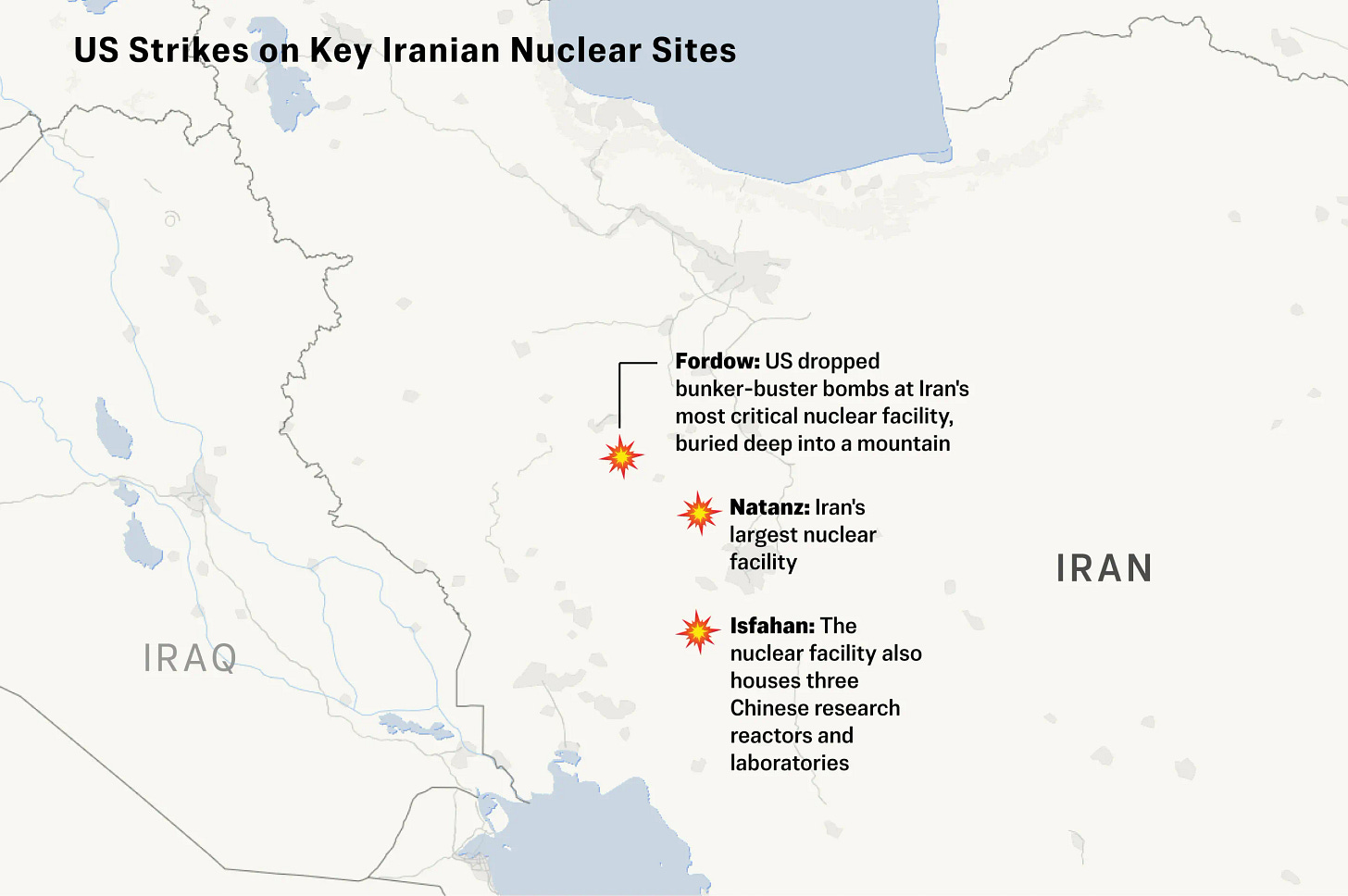Here’s How U.S. Strikes on Iran Unfolded
Military planners dubbed the stunningly successful U.S. airstrikes on Iran’s nuclear facilities Operation Midnight Hammer. Here's how it worked.
Don’t miss these important analyses from this weekend, both FREE:
by Ryan Morgan
June 23, 2025
The U.S. strike on three Iranian nuclear facilities overnight on June 21–22 followed a highly intricate plan that entailed more than 125 U.S. aircraft and warships and layers of deception, Defense Secretary Pete Hegseth said during a Pentagon news briefing.
Hegseth said preparation for the mission — dubbed Operation Midnight Hammer — took place over the course of weeks and months, “so that we could be ready when the President of the United States called.”
The U.S. strikes were made a week after Israel launched a series of surprise airstrikes across Iran, aimed at eliminating the country’s nuclear programs and degrading its conventional military capabilities.
Joining the conflict that Israel initiated, U.S. military planners set Iran’s Fordow uranium enrichment facility as their primary target. With the Fordow facility situated hundreds of feet underground in a mountainous region of Iran, U.S. Air Force B-2 Spirit stealth bombers carrying 30,000-pound bunker-busting bombs, called GBU-57A/B Massive Ordnance Penetrators (or MOPs), offered one of the best options to destroy the facility.
Gen. Dan Caine, chairman of the Joint Chiefs of Staff, said the operation was the longest B-2 bomber mission since 2001, the second longest B-2 mission ever flown, and the first operational use of the GBU-57 bombs.





